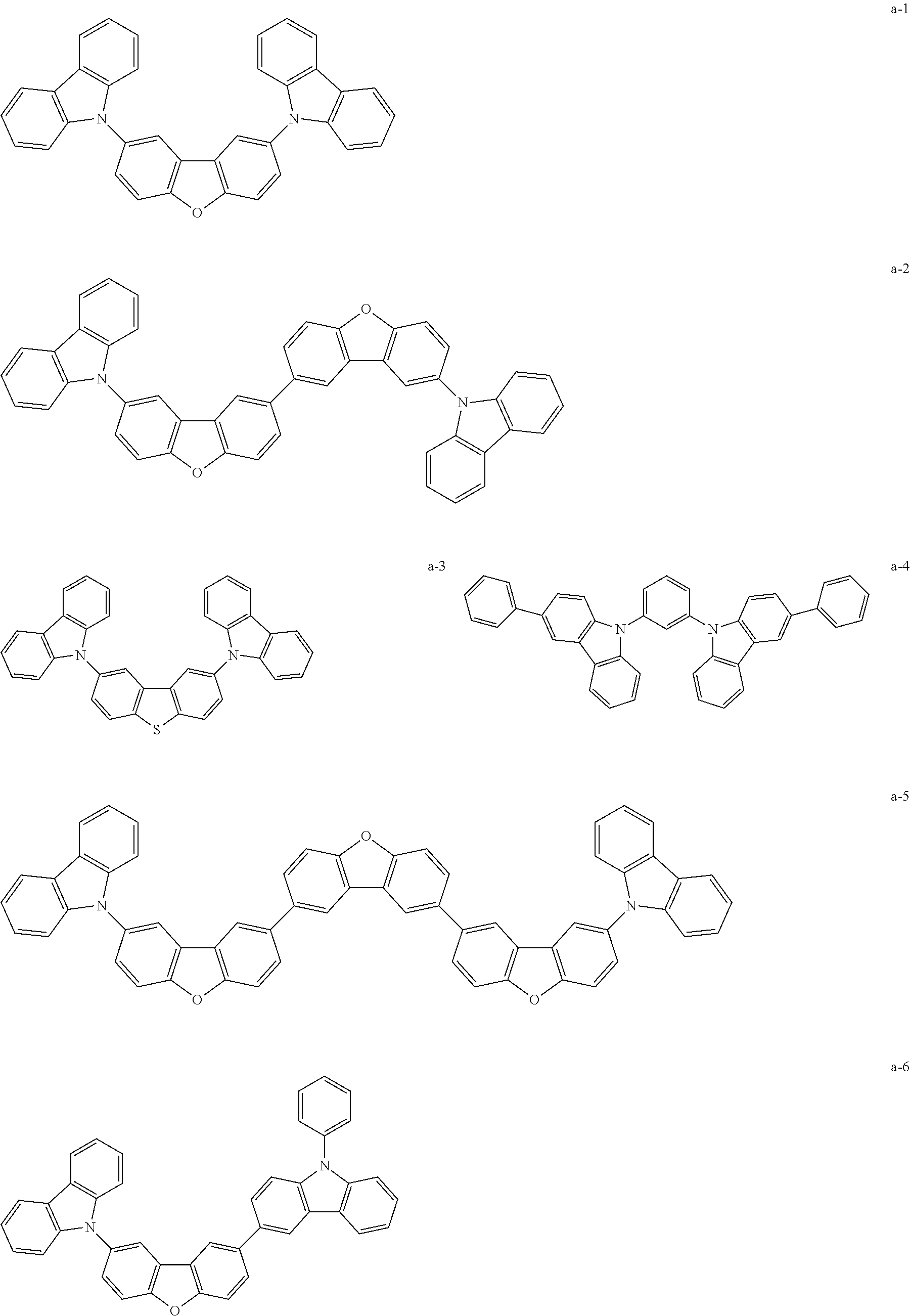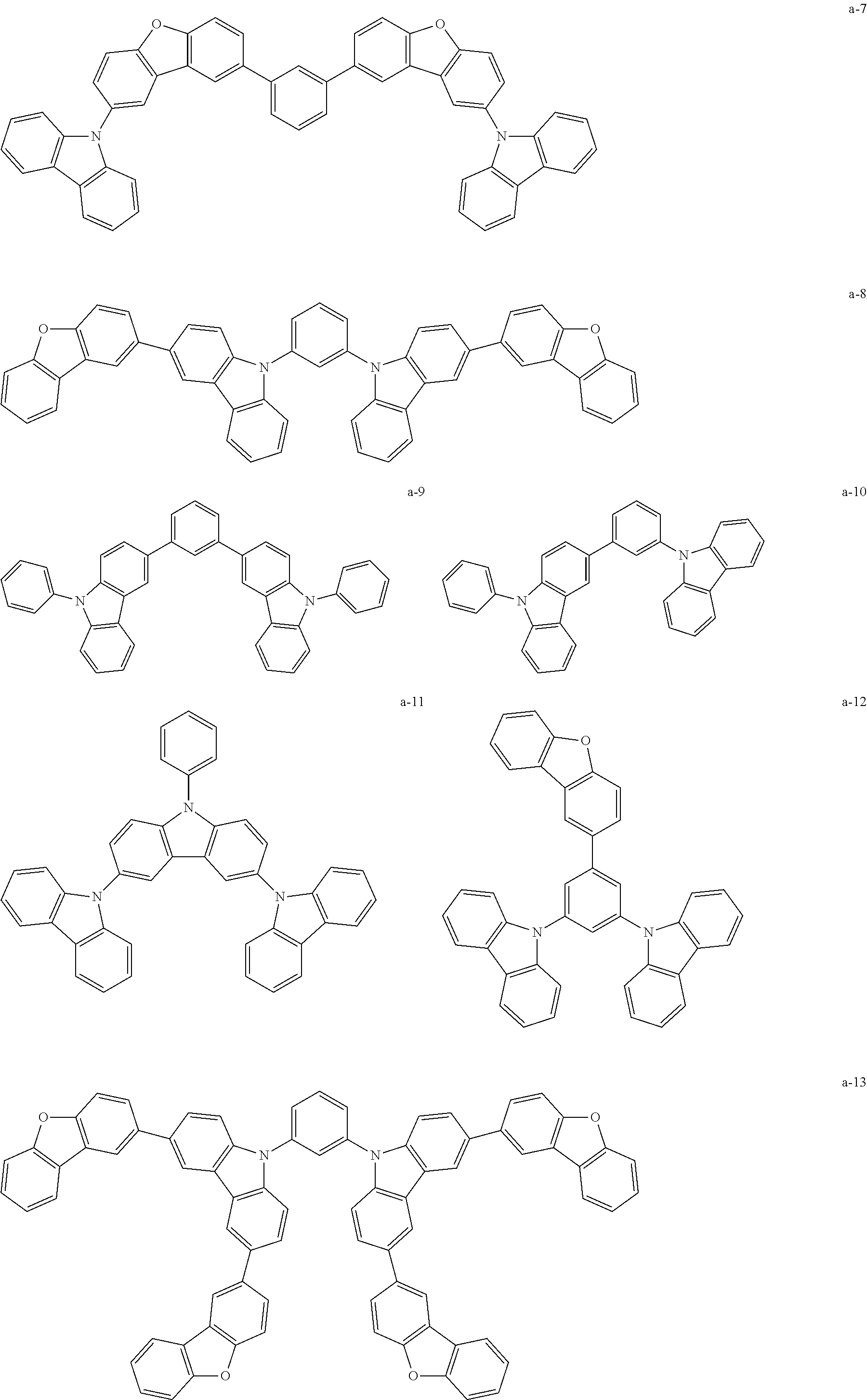Production method for organic electroluminescent element
a production method and electroluminescent element technology, applied in the direction of electric lighting sources, solid-state devices, electric light sources, etc., can solve the problems of increasing driving voltage and increasing voltage, cracking or scraping of film layers and reducing the chance of recombination of holes and electrons
- Summary
- Abstract
- Description
- Claims
- Application Information
AI Technical Summary
Benefits of technology
Problems solved by technology
Method used
Image
Examples
example 1
Preparation of Organic EL Element 101
[0173]An anode was prepared by making patterning to a PET film of 100 mm×100 mm×0.3 mm (LUMILAR, made by TORAY Industries, Inc.) on which a 100 nm film of ITO (indium tin oxide) was formed. Thereafter, the above transparent support substrate provided with the ITO transparent electrode was subjected to ultrasonic washing with isopropyl alcohol, followed by drying with desiccated nitrogen gas, and was subjected to UV ozone washing for 5 minutes.
[0174]On this transparent support substrate thus prepared was applied a 70% solution of poly(3,4-ethylenedioxythiphene)-polystyrene sulfonate (PEDOT / PSS, Baytron P AI 4083 made by Bayer AG.) diluted with water with a spin coating method by adjusting the conditions so that a film thickness became 40 nm.
Then the coated film was dried at 130° C. for one hour to obtain a hole injection layer.
[0175]Subsequently, the substrate was fixed in a vacuum deposition apparatus, and the pressure of the vacuum tank was redu...
example 2
Preparation of Organic EL Elements 201 to 204
[0205]Organic EL element 201 was prepared in the same manner as preparation of Organic EL element 101, except that a light emitting host and a dopant each were replaced with the compounds shown in Table 2 so as to change an emission color to white, and the film thickness was made to be the value shown in Table 2. Further, Organic EL elements 202 to 204 each were prepared in the same manner as preparation of Organic EL elements 102 to 104, except that a light emitting host and a dopant each were replaced with the compounds used in Organic EL element 201 and the film thickness was made to be the value shown in Table 2. In addition, the used amounts of the compounds in the organic light emitting layer were made as follows, exemplified compound a-6: Dopant-1: Ir-1: Ir-4=5:24.2:0.3:0.4 by mass.
<
[0206]The prepared organic EL elements each were evaluated with respect to the items done in Example 1. Th...
example 3
Preparation of Organic EL Elements 303, 304 and 402
[0208]Organic EL elements 303 and 304 each were prepared in the same manner as preparation of Organic EL elements 203 and 204, except that no tension was applied during the constant rate drying in the drying step of the organic light emitting layer after coated, and the tension was applied to the 4 sides of the substrate during the decreasing rate drying: 2.8 N / m for Element 303; and 44 N / m for Element 304 as shown in Table 3.
[0209]Here, a stress to the substrate becomes 9.3 kPa when a tension of 2.8 N / m is applied, and a stress to the substrate becomes 145 kPa when a tension of 2.8 N / m is applied.
[0210]Further, Organic EL element 402 was prepared in the same manner as preparation of Element 203, except that one axis stretching was made with a tension of 1,500 N / m during a decreasing rate drying so as to stretch in an amount of 2 cm. When Organic EL element 402 was observed with a microscope, it was observed a crack on the coated la...
PUM
| Property | Measurement | Unit |
|---|---|---|
| temperature | aaaaa | aaaaa |
| temperature | aaaaa | aaaaa |
| temperature | aaaaa | aaaaa |
Abstract
Description
Claims
Application Information
 Login to View More
Login to View More - R&D
- Intellectual Property
- Life Sciences
- Materials
- Tech Scout
- Unparalleled Data Quality
- Higher Quality Content
- 60% Fewer Hallucinations
Browse by: Latest US Patents, China's latest patents, Technical Efficacy Thesaurus, Application Domain, Technology Topic, Popular Technical Reports.
© 2025 PatSnap. All rights reserved.Legal|Privacy policy|Modern Slavery Act Transparency Statement|Sitemap|About US| Contact US: help@patsnap.com



